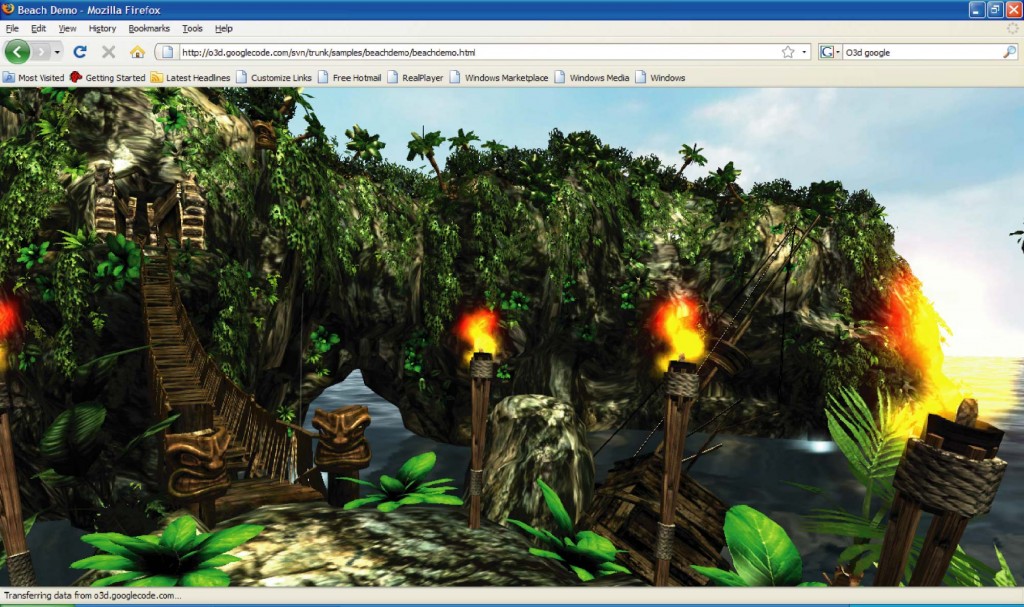Latest News
April 23, 2009

In addition to being the leading search engine, Google wants to become a 3D engine for the Web. This week marks the premier of O3D, Google’s “open-source JavaScript API for creating interactive 3D graphics applications that run in a browser window.”
Google released the API through its Google Code Labs, a place where it shares works in progress and collects feedback from the developer community. (Similarly, Autodesk and SolidWorks also house their early codes at Autodesk Labs and SolidWorks Labs.) O3D is currently available for Windows, Mac, and Linux platforms.
In its present incarnation, the API works with COLLADA format to digest 3D geometry and scene building information from other software. Autodesk 3D Studio Max, Autodesk Maya, Google SketchUp, and some CAD packages offer this export option. SolidWorks users can employ the COLLADA Export plug-in, downloadable from SolidWorks Labs.
O3D’s software architecture schematics reveal the 3D scene is rendered in OpenGL and Direct3D, then funneled through the Graphics Processor Unit. To enable O3D viewing within your browser, you need to download and install the O3D plug-in.
Web-viewable 3D is a critical component of online collaboration, especially for engineers and industrial designers who wish to work with people who do not typically own and operate CAD software. Recently, AfterCAD Online, which supplies viewing and markup tools to subscribers, added 3D support, powered by open-source 3D game enigne OGRE.
Christopher Boothroyd, AfterCAD Online’s CEO, said, “Its great to have Google out there stirring it up and getting other vendors to step up to the game. It would be nice if there was one Open Standard 3D viewing technology out there that everyone agreed on, which I think COLLADA is coming close too. The problem is, this is just another 3D plug-in you have to download and install and if someone else doesn’t have the same plug-in, it falls apart. This has been the case with all 3D JAVA and ActiveX attempts. We decided to do it server side to get around this problem and deliver everyone the same experience by simply clicking on a link.”
Dassault Systemes, makers of CATIA, hopes to capture the same market with its 3DVIA Virtool. For more on 3D viewing on the Web, watch the video report below.
Subscribe to our FREE magazine, FREE email newsletters or both!
Latest News
About the Author
Kenneth Wong is Digital Engineering’s resident blogger and senior editor. Email him at [email protected] or share your thoughts on this article at digitaleng.news/facebook.
Follow DE





